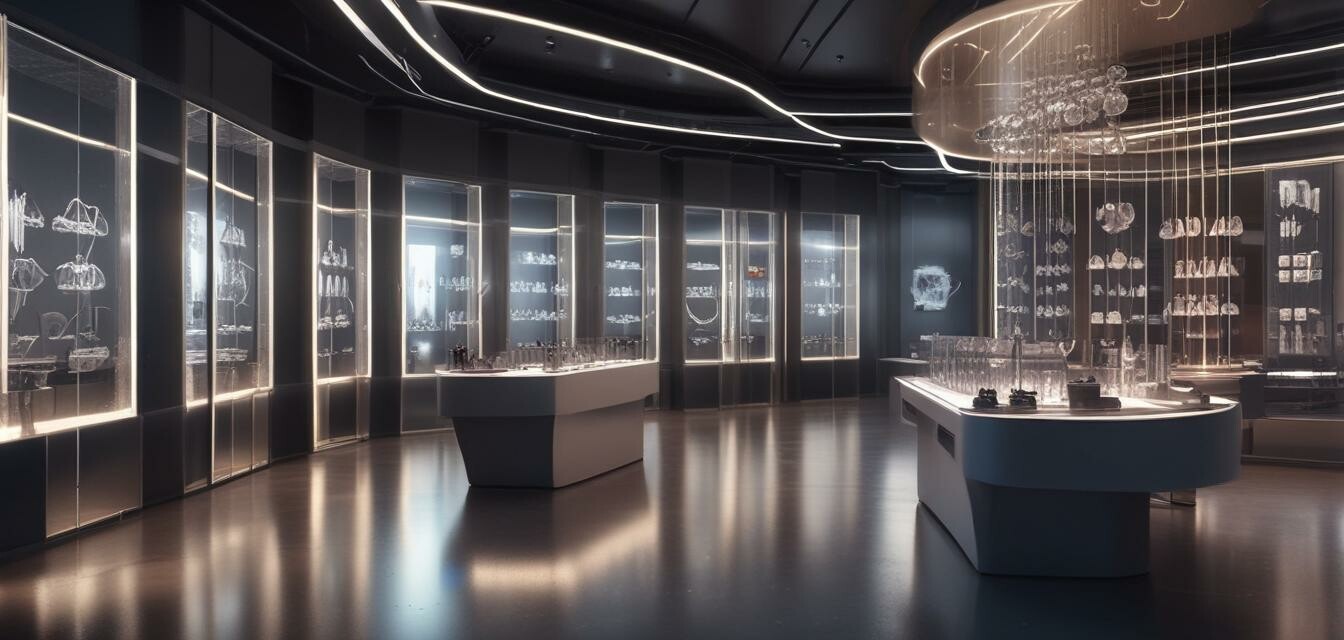
The Future of Jewelry Design: Innovations to Look For
- Technological advancements are set to revolutionize jewelry design.
- Sustainable practices are influencing industry standards.
- Customization and personalization in jewelry are on the rise.
- New materials and manufacturing processes are emerging.
- 3D printing and AI are reshaping creative possibilities.
The world of jewelry design is constantly evolving. With rapid technological advancements, designers are now able to create innovative pieces that not only reflect personal style but also embrace sustainability and modernity. In this article, we explore the future of jewelry design, highlighting the innovations that are set to redefine personal adornment in the coming years.
Technological advancements in jewelry design
The intersection of technology and design is perhaps the most exciting aspect of the future of jewelry. From 3D printing to artificial intelligence, technology is streamlining the design process and expanding creative possibilities.
3D Printing
3D printing technology allows designers to quickly prototype jewelry designs, significantly reducing the time and cost involved in traditional manufacturing methods.
Artificial Intelligence
AI is becoming an invaluable tool in jewelry design. It can analyze trends and suggest designs based on consumer preferences, providing designers with insights that were previously unattainable.
Sustainability in jewelry design
With consumers becoming more conscious of ethical practices, sustainability is influencing design choices. Jewelers are now exploring alternatives to traditional mining practices.
Ethically sourced materials
Designers are increasingly using recycled metals and lab-created gemstones, which are not only more sustainable but also offer unique aesthetic qualities.
Eco-friendly practices
Many jewelers are adopting eco-friendly practices in their production processes, further reducing their carbon footprint.
Customization and personalization
Today's consumers are not satisfied with one-size-fits-all jewelry. They want pieces that resonate with their personal stories. Customization is becoming a key trend.
Customizable designs
With advanced technologies like 3D printing, it is now easier for customers to collaborate with designers to create unique pieces that reflect their individuality.
Engagement with consumers
Brands are utilizing social media and online platforms to engage with consumers, allowing for tailored design experiences that create a deeper emotional connection.
Innovative materials
As design evolves, so too do the materials used. The future will see an emphasis on experimenting with new materials that enhance both durability and aesthetics.
| Material | Advantages | Example Uses |
|---|---|---|
| Recycled metals | Environmentally friendly, unique finishes | Rings, bracelets, earrings |
| Lab-created gemstones | Sustainable, ethical sourcing | All types of jewelry |
| Bioplastics | Lightweight, versatile | Innovative design pieces |
Future trends in jewelry design
As we move forward, several trends are emerging that will shape the future of jewelry design.
Minimalism and simplicity
Less is more is becoming the mantra for many designers. Clean lines and understated elegance are in vogue, appealing to modern tastes.
Geometric shapes
Geometry is finding its way into designs, offering bold yet sophisticated pieces that stand out while remaining stylish.
Smart jewelry
Wearable technology is also encroaching on the jewelry market. Smart rings and bracelets that track health metrics are just the beginning of a growing trend.
The role of social media in shaping trends
Social media platforms are playing a significant role in influencing jewelry trends. They allow for rapid dissemination of design ideas and styles, encouraging unique expressions of personal style.
Influencer collaborations
Many brands collaborate with influencers to showcase their pieces, allowing them to reach new audiences and establish brand credibility.
Consumer feedback
Brands benefit from real-time feedback from consumers, enabling them to adapt designs and approaches according to market demands.
Tips for shoppers
- Stay informed about the latest trends by following social media influencers in the jewelry space.
- Look for unique, customizable pieces that resonate with your personal style.
- Prioritize sustainability by choosing brands that emphasize ethical sourcing and eco-friendly practices.
- Consider the materials used in jewelry and opt for those that align with your values.
- Engage with designers to explore bespoke options that cater to your individual preferences.
Pros
- Technological advancements enhance creativity.
- Sustainable practices appeal to eco-conscious consumers.
- Customization allows for personal expression.
Cons
- Higher costs associated with innovative materials.
- Learning curve for new technologies in production.
In conclusion, the future of jewelry design is bright and full of promise. With innovations in technology, a focus on sustainability, and an emphasis on personalization, the jewelry industry is set to transform how we perceive and wear adornments. To stay ahead of the curve in this dynamic landscape, consider exploring our News and Trends section for the latest insights that will keep you inspired.